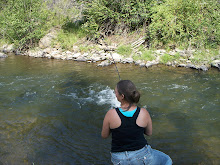Traveling Caravan Entry #7
Wednesday, June 26, 2013
Topic: What did
an American Colony need to function properly?
Colonial
towns were a lot different than the towns we live in today. The only thing that stayed the same
with the towns might be the name of it.
Then again, I grew up in Valley View and back in the early 1800’s it was
called Osmantown. I am drawing
attention to the businesses that were in town back in the colonial days, for
example, wheelwright, tanner, cooper, carpenter, blacksmith, chandler, etc. Again as my last post mentioned,
Walmart, Kohl’s, and Target were not part of the colonists vocabulary. Honestly I wish is wasn’t part of our
vocabulary either, but there is not much I can do about that.
(Content)
(Content)
I have inherited many old pictures
from my area in Schuylkill County.
Some pictures are great snapshots into the past that show different
businesses. Each student would get
a map of the town with a key that shows different businesses. The students must label each building
that is numbered on the map. They
are labeling what business went where.
(DOK 1) Each spot on the map will be numbered
and a corresponding picture will go with it from my collection. Students will use the pictures to help
them predict where the different businesses go. (DOK 2) Students will then construct their own
town and place various businesses throughout it and label the type of business
they included. (DOK 3) As a group we will all connect the past
to the present and write how things have improved over time. Students might even want to write about
if they think the smaller business in the town were better than the Walmart’s,
Target’s, or Kohl’s. It would be interesting
to hear their opinions on this matter. (DOK 4) Creative Activity
Standards:
3.1.1.A5, A9; 3.1.1.B6; 3.2.1.A1, A3, A6
7.1.3.A; 7.1.4.B; 7.2.3; 7.2.3.3
11.3.3.F
